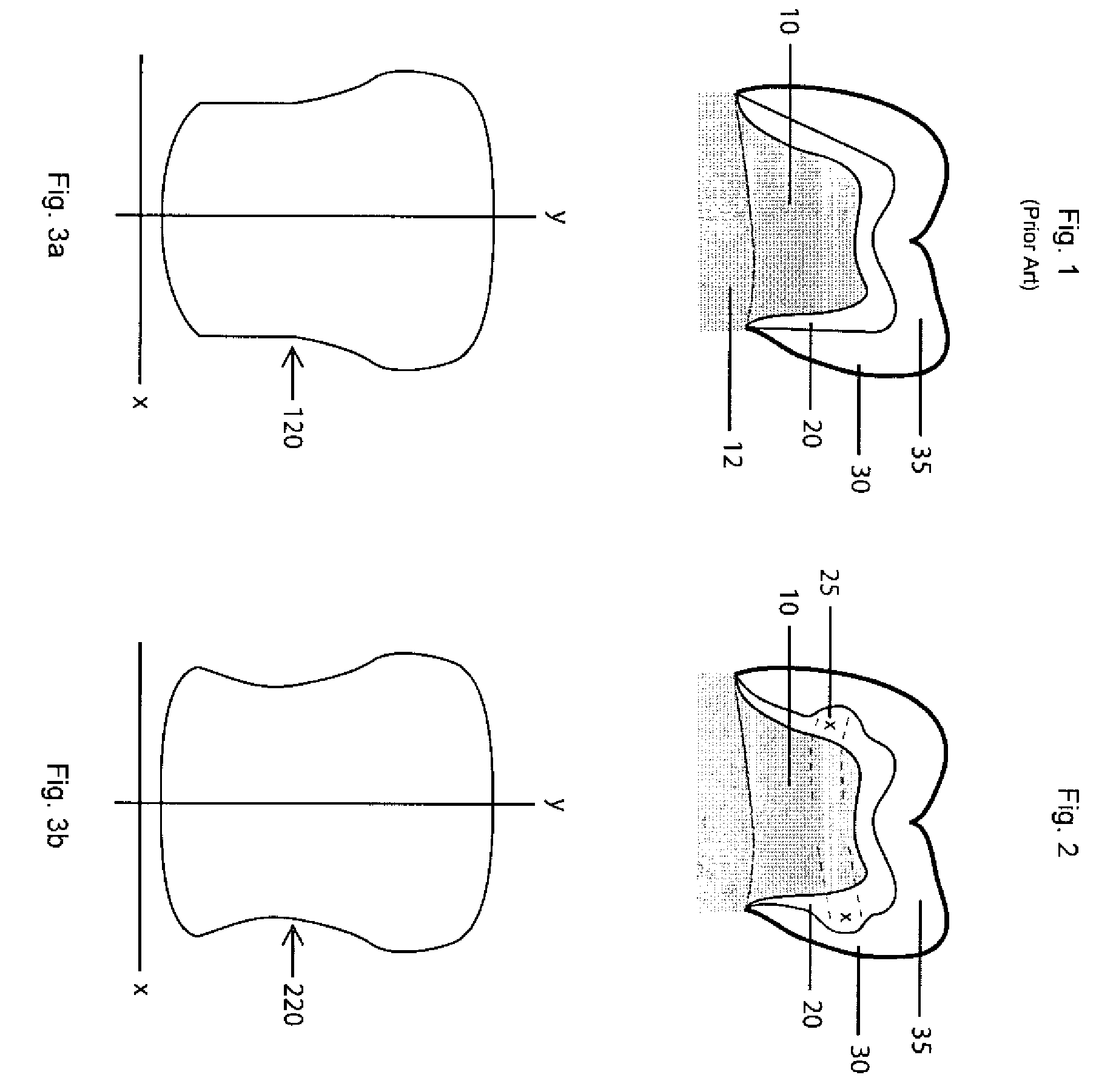High strength substructure reinforcement for crowns and bridges
a high-strength, bridge-like technology, applied in the field of prosthodontic systems, methods and apparatuses, can solve the problems of fracturing of veneered porcelain while the ceramic core remains intact, more unsupported buccal porcelain, and still large bulks of unsupported porcelain, and achieves high-strength substructure, high-strength substructure, and reinforced substructure
- Summary
- Abstract
- Description
- Claims
- Application Information
AI Technical Summary
Benefits of technology
Problems solved by technology
Method used
Image
Examples
Embodiment Construction
[0022]As required, a detailed embodiment of the present invention is disclosed herein; however, it is to be understood that the disclosed embodiment is merely exemplary of the principles of the invention, which may be embodied in various forms. Therefore, specific structural and functional details disclosed herein are not to be interpreted as limiting, but merely as a basis for the claims and as a representative basis for teaching one skilled in the art to variously employ the present invention in virtually any appropriately detailed structure.
[0023]Referring to FIG. 1, a dental implant including a conventional substructure is shown. As is shown in FIG. 1, the implant includes abutment portion 10 over which thin coping 20 is fit. Crown 30 is formed about coping 10 from a veneer porcelain to the shape of the final restoration. As can be seen in FIG. 1, a considerable amount of bulking out of the veneer porcelain is required to establish the final form of the restoration. The stresses...
PUM
 Login to View More
Login to View More Abstract
Description
Claims
Application Information
 Login to View More
Login to View More - R&D
- Intellectual Property
- Life Sciences
- Materials
- Tech Scout
- Unparalleled Data Quality
- Higher Quality Content
- 60% Fewer Hallucinations
Browse by: Latest US Patents, China's latest patents, Technical Efficacy Thesaurus, Application Domain, Technology Topic, Popular Technical Reports.
© 2025 PatSnap. All rights reserved.Legal|Privacy policy|Modern Slavery Act Transparency Statement|Sitemap|About US| Contact US: help@patsnap.com


